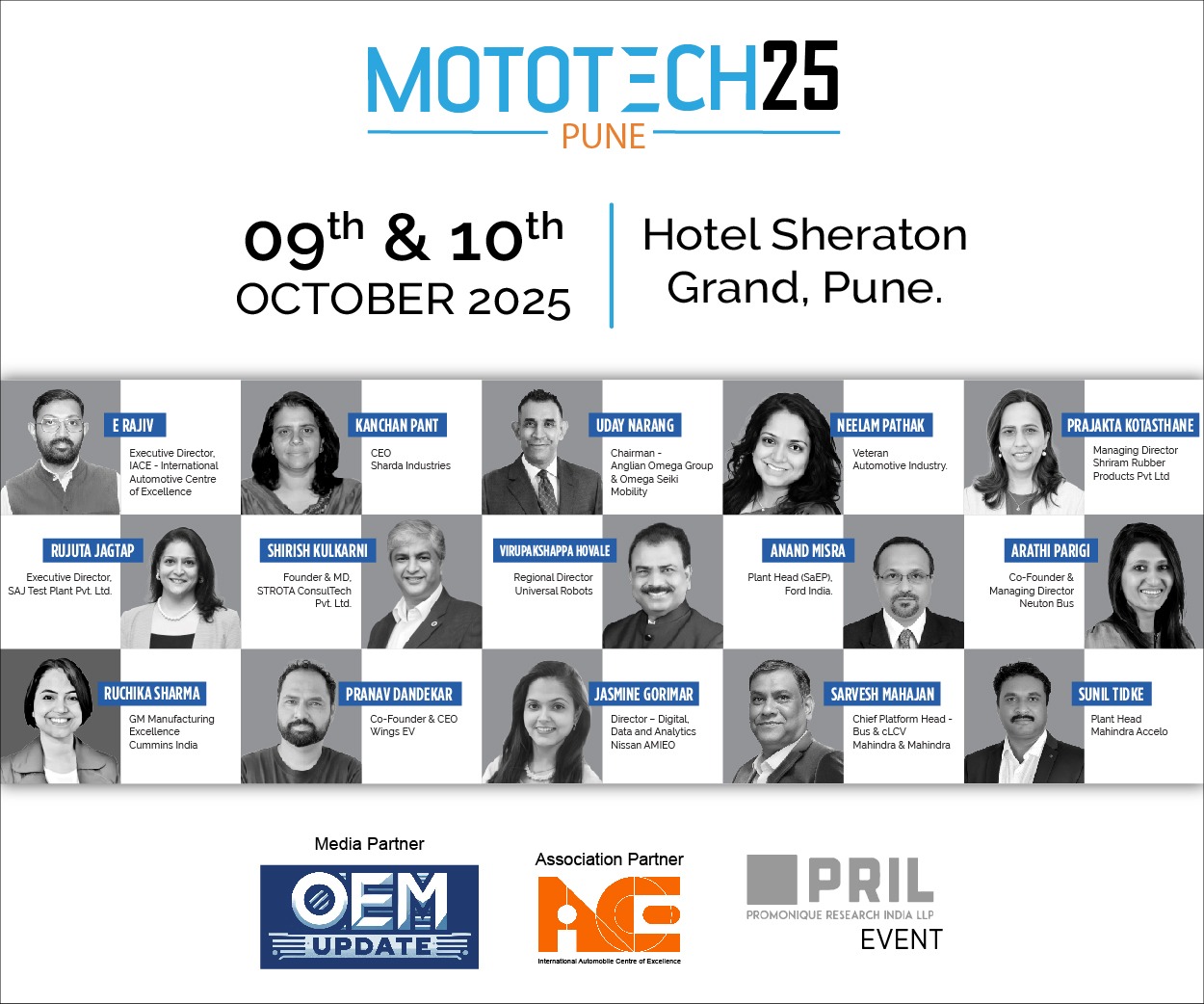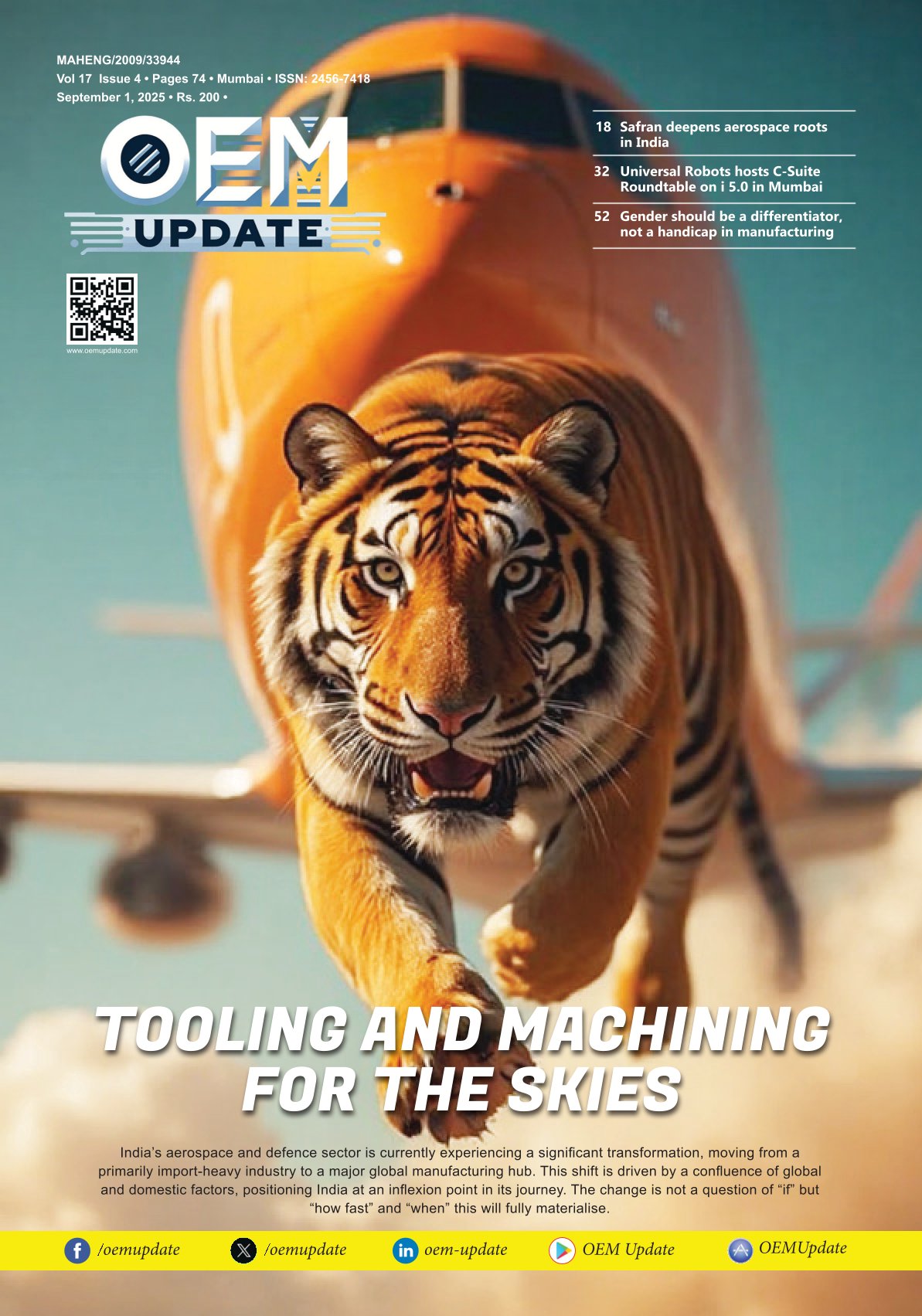A dashboard of real-time data supports effective decision making
By OEM Update Editorial October 1, 2022 3:20 pm IST
Allowing the system to learn from data, process knowledge, and human intervention will generate sufficient information to make on time intelligent corrections.
IIoT has relevance to all kinds of Industrial monitoring applications and finds use in most manufacturing processes using cyber-physical systems such as sensors, software, instruments and devices. Automotive, Aerospace, Die & Mould, Medical, Energy, and Defence domains are some industries that currently use IIoT.
Over the past 30 years, manufacturing reliability has been emphasised and progressed. New age production & manufacturing techniques, such as Just-in-Time, Lean Manufacturing, and TPM, amongst others, are based on the principle of manufacturing and production methods. These processes are currently in play and are primarily predictable and intelligent, so any stoppage in production is either known in advance or circumvented by using a “real-time, Online and Reliable” monitoring process(es).
In essence, IIoT provides managers with a dashboard of intelligent and real-time (as well as historic, while using AI/ML algorithms) information to enable quick decision-making. Modern businesses are plagued by many uncertainties related to several macro and micro factors as a result of the VUCA world that we currently live in. It is therefore vital for these businesses to use modern IIoT systems to stay ahead of failure events and, at the same time, produce/deliver goods & services while being profitable.
Advantages of IIoT to stay competitive in the market.
Modern IIoT systems are highly customisable. And more often than none, they are programmatically structured to display information related to disruptive events such as tool breakage on CNC machines, pressure in pipelines & boilers, temperatures in furnaces, number of times a machine has been under maintenance, number of parts produced on a particular assembly line, realtime inventory of stores, process compliance and violation counts, load variance in a circuit etc. It is not hard to imagine the benefits that such information brings to Decision Support Systems (DSS). Current information related to manufacturing equipment and processes increases manufacturing reliability by using tools within IIoT to predict OEE, TEEP, FMEA, MTBF etc.
In analogy, imagine older businesses using a paper map to navigate today’s city and highway network from point A to point B. In contrast, a modern manufacturing business uses a popular and efficient tool such as Google Maps. As long as there are no disruptions in the roads, routes or bridges along the way, there is not much competitive difference between both, save for the ease of directions. Unfortunately, such an ideal situation exists only on some rare occasions in a year, in today’s times. Therefore, modern businesses using a real-time GPS-based navigation system will be far more efficient in managing travel over a while compared to their unfortunate counterparts. They will spend considerable time in traffic and/or become victims of roadblocks, weather-related issues, etc.
Risks and challenges of IIoT and how it secures from cyberattacks
Nearly all IIoT setups are cyberphysical and therefore prone to attacks from malware, viruses, data corruption, system failures etc. In addition, the ever-changing landscape of modern computer hardware and software adds to the challenges of maintaining IIoT deployments over time. Also, since the technology is relatively new, it is challenging to find a workforce that is well trained and can extract the derived benefits of using such systems. As with all processes, configuring the IIoT systems is also vital, and given that there are many domestic and international players, businesses will require a cost-efficient and reliable deployment across their manufacturing. It is easy to lose track of the business focus for some small manufacturers if they don’t find a correct implementation partner.To ward off cyberattacks, the IT department at businesses should devise a robust security plan and work with a team of reliable service providers to ensure that they do not inadvertently expose any loose ends in the system. Newer security companies use many modern technologies to deploy hardware agnostic and software-based security systems.
IIoT spending in the discrete manufacturing sector in Asia-Pacific Many manufacturing companies in the APAC region are looking at integrating their manufacturing operations upstream and downstream. This links up production, supply chain, quality and workforce efficiently. Furthermore, the automotive, aerospace and White Goods manufacturing industries tend to employ technically sound and educated workers. This is why the adoption rate of IIoT in APAC is rising tremendously. New equipment is already fitted with IIoT devices and software, and older equipment is being retrofitted with sensors, devices and software as the discrete manufacturing sector realises the importance and benefits of these systems.
That being said, the current chip shortage is a thorn in the flesh, and until this issue is resolved, the dates for the realisation of the amount, as mentioned above, will continue to be moving targets.
IIoT applications can help resolve system failures and downtime in IIoT deployments
Big Data and Analytics are the answer to identifying failure modes and unscheduled downtimes. Allowing the system to learn from data, process knowledge, and human intervention at critical points will generate sufficient information to make intelligent corrections or tweaks to existing process(es). Information from this will help two crucial aspects – • Understand the timeline of future event failure. • Prepare for event failure with the current equipment and services before failure occurs.
Knowledge of both points will help in having a resolution when such a critical event occurs. E.g., let us imagine that the ball bearings in a machine tool spindle will fail in 300 hours (12.5 days). Suppose the lead time to arrange spare parts and service engineers on-site is seven days. In that case, the system will raise the alarm indicating such an event – thereby allowing the system or decision makers to complete formalities to arrange for the spares and personnel well in time before failure. In such situations, the delay will only be as much time required to perform the bearing replacement rather than the considerable lead time and repair after a catastrophic event.
Emerging trends shaping the development of the Die and Mould industry The Die and Mould Industry is one of the forerunners in technology development and adoption. This domain which works with discrete manufacturing and custom requirements daily must always be on the lookout for new technology trends to optimise its processes. The combination of cyber-physical, robotic and mechatronic automation systems are some of the technologies that are impacting the Die and Mould Industry currently. The industry is slowly moving towards mass customisation, and this industry must use new-age automation tools to be flexible and optimal simultaneously.
Modern machine tools offer multi-tasking machining, latest moulding and forming technologies are changing the way Dies and Moulds are constructed today. Part loading and conveying systems enable faster production of tools and components. Come to think of it, apart from the knowledge and science a toolmaker carries. Everything else has become standard across the manufacturing space.
Cookie Consent
We use cookies to personalize your experience. By continuing to visit this website you agree to our Terms & Conditions, Privacy Policy and Cookie Policy.
















